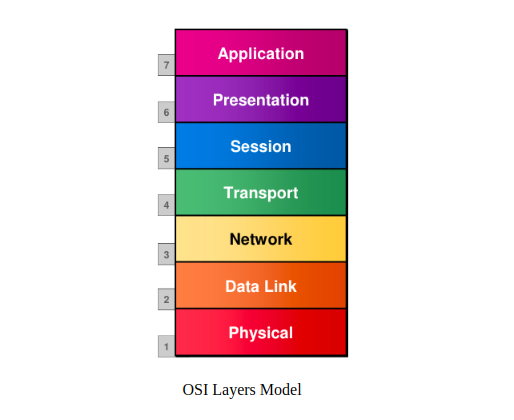
Security Blind Spots in Cyberspace: Critical Invisible Threats in the Digital Age
With the advancement of technology and the increasing use of digital assets in IT environments, security concerns have risen. These concerns can be associated with various parts of an IT environment. However, there are always areas within a firm’s IT infrastructure and systems that are either unmonitored or not adequately monitored. Additionally, an area that was once a concern and later resolved may become a threat again due to emerging security risks, yet it may go unnoticed. These unattended security threats within an organization are known as "Cyberspace Blind Spots"
Importance:
Threats are constantly evolving, and attackers are becoming more sophisticated in their methods of invasion and bypassing security controls. “Living off the land”, is one of the techniques where attackers exploit existing tools within an organization against itself. However, blocking these tools could severely impact productivity and revenue. Another critical issue lies with “Active Directory”. Since it is accessible through any domain network, an attacker can execute queries and compromise a single device to achieve total domain dominance in just seven minutes. As a result, security teams may not be able to respond in time. Finally, the most challenging blind spot attack is the “in-flight targeted attack”. These attack patterns are employed by highly sophisticated groups and are extremely difficult to detect, as they adapt dynamically based on real-time information.
Analysis:
Let’s consider the Open Systems Interconnection (OSI) framework as an example. Security threats can exist at any layer, from the physical layer to the application layer. Many security analysis solutions—including detection, prevention, and mitigation strategies—target different layers of this model. In this discussion, we will briefly analyze the security blind spots within the OSI model.
At the base, the physical layer is responsible for transmitting raw data, or bitstreams, between devices. The data link layer then encapsulates these bitstreams into frames for transmission. It also provides error detection and correction to enhance reliability within the local network. The network layer manages logical addressing (e.g., IP addressing and subnetting) and routing, while the transport layer ensures the reliable, in-sequence delivery of data packets when using the TCP protocol. The session layer is responsible for establishing, maintaining, and terminating communication sessions. The presentation layer formats the data before passing it to the application layer, which serves as the interface for applications to access network services.

OSI Model Blind Spot Security Threats
Physical Layer Blind Spot Vulnerabilities:
In the absence of sufficient and appropriate security measures, tampering and eavesdropping are the primary threats at the physical layer. Therefore, it is crucial to secure IT assets, devices, and the overall physical infrastructure by placing them in a protected location. Implementing security measures such as passcodes, biometrics, and, when necessary, Hardware Security Modules (HSMs) can significantly enhance protection.
Data Link Layer Blind Spot Vulnerabilities:
MAC spoofing and ARP poisoning are two major attacks that occur in the absence of proper monitoring in the data link layer. An adversary may modify the ARP table, which maps IP addresses to MAC addresses, by replacing the target device’s MAC address with their own. This allows them to redirect network traffic. Additionally, an attacker can commit identity theft and impersonate a trusted device by altering their MAC address through spoofing.
Network Layer Blind Spot Vulnerabilities:
In the network layer, adversaries perform IP spoofing, manipulate the routing table, and alter network traffic. An attacker may send a data packet with a forged IP address to trick the network into believing it originated from a trusted source. This can result in traffic redirection, especially in the absence of proper logging and route integrity checks.
Transport Layer Blind Spot Vulnerabilities:
One of the major types of attacks that target multiple layers, including transport layer, is Denial of Service (DoS) and Distributed DoS (DDoS). In the absence of sophisticated and intelligent network monitoring, low-volume DoS/DDoS attacks at this layer may go undetected. SYN floods and Smurf attacks, both subtypes of DDoS attacks, can significantly impact overall network performance. In an SYN flood, an attacker uses a spoofed IP address to initiate an excessive number of connections to a server, overwhelming it. In a Smurf attack, malware floods the network with spoofed broadcast traffic, causing network congestion and disruption.
Session Layer Blind Spot Vulnerabilities:
Session hijacking is one of the well-known vulnerability concerns in the session layer. The adversary may gain unauthorized access to the session and take it over by exploiting insecure tokens or the lack of session expiration policies. Session hijacking is the result of a weak session management mechanism. The adversary performs a Man-in-the-Middle (MitM) attack to intercept the legitimate user’s traffic and steal the session ID.
Presentation Layer Blind Spot Vulnerabilities:
For HTTPS, the presentation layer is where the encryption process occurs in conjunction with the Secure Socket Layer/Transport Layer Security (SSL/TLS) communication protocols. TLS is the enhanced version of SSL, addressing the security gaps and flaws present in SSL. The adversary may apply SSL/TLS hijacking or sniffing tactics through a Man-in-the-Middle (MitM) attack and malware (such as a proxy). The browser would then trust an incorrect certificate authority, allowing the attacker to read all the messages.
Application Layer Blind Spot Vulnerabilities:
Application layer communicates directly with the end users, and it is the target of various types of attacks by adversaries. Adversaries may perform SQL injection attacks to exploit vulnerabilities in web applications that do not validate users. A file injection attack is another type of threat in which the web application loads a malicious file from an untrusted source.
Conclusion:
In conclusion, the OSI model’s layers are vulnerable to various security threats. Adversaries exploit weaknesses such as insecure session management, SSL/TLS vulnerabilities, and application flaws, which are common security blind spots in the OSI model. These gaps create opportunities for attackers to launch different types of attacks. To mitigate these risks and address these blind spots, it is essential to implement robust security practices, such as encryption and input validation, to ensure the integrity and confidentiality of user data.
References:
[1] Symantec, "Where Are Your Security Blind Spots?", 2021. [Online].
[2] “SMB University: Selling Cisco SMB Foundation Solutions”, 2006, [Online].
[3] “OSI Security Architecture”, 2025, [Online].
[4] “OSI Model Reference Chart”, 2021, [Online].
[5] “Using the OSI Model to Understand Cybersecurity Threats, Part One”, 2023, [Online].
[6] “Security Protocols in the Data Link Layer”, 2023, [Online].
[7] “What are the 7 layers of the OSI model?”, 2021, [Online].
[8] “Security and identity”, 2025 [Online].
[9] “Using the OSI Model to Understand Cybersecurity Threats, Part Two “, 2023, [Online].
[10] “What’s the Difference Between SSL and TLS? “, [Online].
[11] "Understanding OSI from Security View – Application Layer", 2023 [Online].
Edited By: Windhya Rankothge, PhD, Canadian Institute for Cybersecurity
Related Blogs: Preparing for the Quantum Shift: Post-Quantum Migration in Cybersecurity , Types of Distributed Denial of Service (DDoS) Attacks